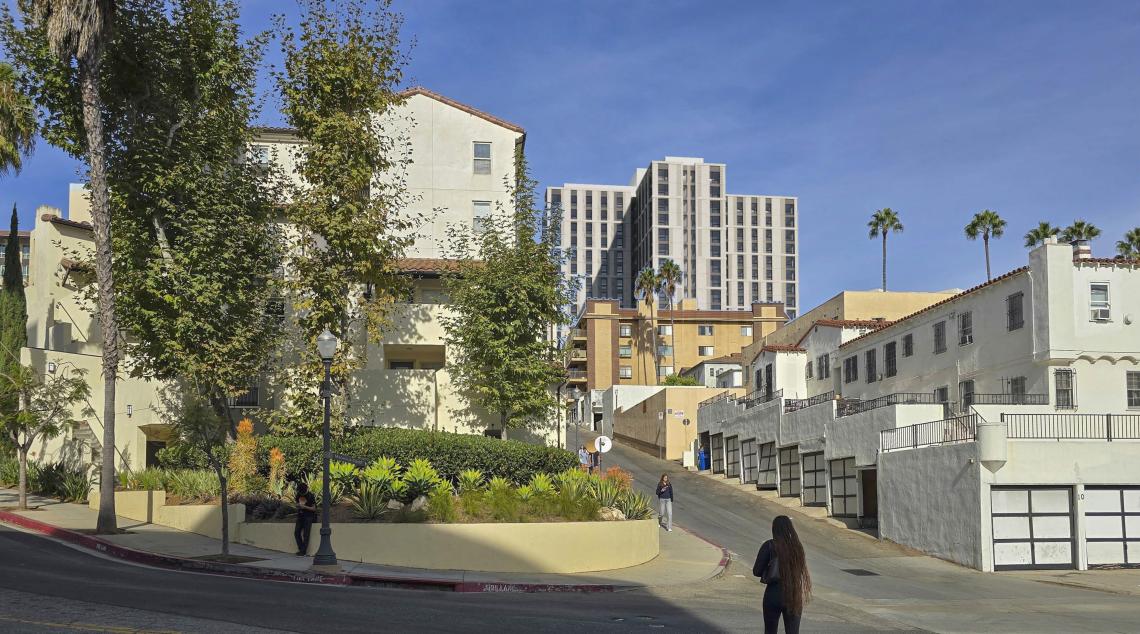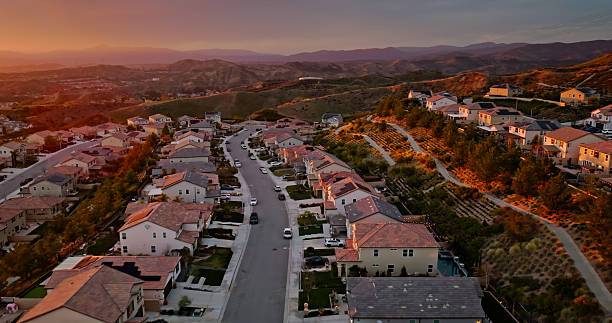Los Angeles has spent years talking about its housing crisis. Too few homes. Too many people. Not enough land that feels politically “safe” to build on. But while the debate drags on across the city, UCLA has quietly done something bold — and honestly, refreshing.
It’s planning to build a 19-story student housing tower near the Westwood campus. A real tower. Not a modest four-story box disguised as “density.” Not a polite townhouse cluster. A true vertical housing solution built to house thousands of students who are desperate for affordable, walkable, close-to-campus living.
And whether Los Angeles realizes it or not, this project is a preview of the kind of development the entire region needs to embrace if it wants to survive the next decade.
Let’s look at why.
A Tower That Finally Treats Student Housing Like a Real Need
For years, UCLA students have been squeezed by high rents, long commutes, and absurd competition for anything within a reasonable distance of campus. Westwood isn’t exactly famous for its affordability. It’s a polished, in-demand neighborhood with limited room to grow, and every new student is competing with professionals, families, and long-term residents for the same scarce units.
The result?
-
Students sleeping in their cars.
-
Campuses overflowing with demand for affordable housing.
-
A rental market that punishes anyone without deep pockets or local family support.
So when UCLA moves forward with a tower built specifically for students, it sends a clear message: If we can’t expand out, we must build up.
This approach isn’t radical; it’s overdue.
Westwood Needs Density — Whether It Likes It or Not
Westwood has a complicated relationship with development. It loves its prestige, its calm streets, its village charm. But charm doesn’t house people. Charm doesn’t reduce rents. Charm doesn’t create access.
Cities grow. Student populations grow. Universities grow. But Westwood has resisted vertical development for decades, creating a pressure cooker of demand with nowhere to go.

UCLA’s tower breaks that pattern.
And honestly? It’s time.
Why Westwood is perfect for high-rise student housing:
-
Students don’t need cars.
-
The area is walkable and transit-rich.
-
It keeps thousands of young residents close to campus instead of spreading them across the city.
-
It reduces student competition for general rental housing.
-
It’s efficient, sustainable, and community-friendly when done right.
The truth is simple: housing students in tall buildings makes more sense than scattering them across the entire region.
The Real Story: Universities Are Becoming Housing Developers
Whether by necessity or frustration, universities across the country are embracing a new identity — one where they become direct developers of housing. And honestly, they might be better at it than cities right now.
Why?
Because universities don’t have the luxury of ignoring the people they attract.
- Students come.
- Students need housing.
- The campus can’t say “no.”
- So campuses must build.
That urgency pushes universities to move faster than city planners, local councils, or homeowner groups ever will. When the housing shortage becomes a threat to enrollment, reputation, or student safety, universities take control.
UCLA’s 19-story tower isn’t just a project. It’s a strategy.
A strategy that says:
-
“We can’t wait for the city to fix this.”
-
“We’ll build what our students need.”
-
“And we’ll set the example ourselves.”
And maybe the rest of Los Angeles should take notes.
Why This Tower Matters Beyond UCLA
If you look closely, this project isn’t just about students. It’s about shifting the entire conversation on Los Angeles housing.
Here’s what it signals:
1. Height is no longer the enemy.
People are finally accepting that mid-rise and high-rise buildings are the only way to add real supply in high-demand areas.
2. Purpose-built housing solves multiple problems at once.
When students stop competing for market-rate apartments, local rents stabilize.
3. The public sector can lead on housing.
When cities freeze, universities and public agencies can still act.
4. Modern density is better than sideways sprawl.
We cannot simply extend the city outward forever. Vertical development is cleaner, faster, and more sustainable.
In other words, this isn’t just a UCLA story. It’s a Los Angeles story.
The Tower Will Change the Neighborhood — But Mostly for the Better
Whenever a big project lands in a neighborhood like Westwood, people worry. Traffic. Shadows. Noise. Construction chaos. Those concerns are valid, but the benefits outweigh them — especially with a student-focused building.
Here’s what the area gains:
-
Fewer cars clogging up the rental market (students tend to walk).
-
More foot traffic for local businesses that rely on young customers.
-
A more balanced rental market as students get dedicated housing.
-
More eyes on the street, improving safety and activity.
-
Architectural modernization, which Westwood badly needs.
Students bring life to Westwood. They’re the reason many businesses survive. Keeping them close to campus isn’t just convenient — it’s economically smart.
The Environmental Piece: Density Is Green
People underestimate this part.
A tall, efficient student housing tower:
-
Reduces commute traffic
-
Cuts fossil fuel use
-
Encourages walking
-
Saves land
-
Centralizes utilities
-
Lowers per-person energy consumption
We often imagine “green living” as a cabin in the woods or a quiet bungalow. But from a sustainability standpoint, high-density student housing near a major university is one of the most environmentally responsible forms of development.
If Los Angeles wants to hit its climate goals, buildings like this aren’t optional. They’re essential.
The Uncomfortable Truth: Without Projects Like This, Nothing Will Change
Los Angeles is full of people who support housing in theory but oppose it in practice. They want affordability but fight height. They demand lower rents but block new apartments. And they want walkability but refuse density.
UCLA is bypassing that gridlock.
A 19-story student tower is a declaration that the status quo is unsustainable. And if institutions like UCLA don’t push these projects forward, the housing shortage will only get worse.
This project is a reminder of a hard reality: Los Angeles cannot keep growing without building vertically.
And UCLA is tired of waiting for the city to accept that.
Will This Spark a New Era of Academic Housing Development?
It might. And it should.
Imagine if other major universities followed suit:
-
USC
-
Cal State campuses
-
UC Irvine
-
Cal Poly Pomona
-
Santa Monica College partnerships
Each one has thousands of students commuting from far-flung parts of the region — clogging roads, renting overpriced rooms, and burning hours of their lives getting to class.
If UCLA’s tower succeeds (and it will), it sets a precedent:
Universities have the power to fix their part of the housing crisis.
And once one starts, the rest tend to follow.
The Bigger Lesson for Los Angeles
Los Angeles is filled with complicated housing arguments. But this project cuts through all of them with one clear message:
Build where the demand is.
Build high enough to matter.
And build fast enough to make a difference.
Simple. Rational. Effective.
UCLA didn’t reinvent urban planning. It just applied common sense.
And that alone feels revolutionary.
Final Thoughts: UCLA Isn’t Just Building a Tower — It’s Building a Compass
This 19-story building is more than concrete and glass. It’s a signal. A direction. A model for how Los Angeles can grow without losing itself.
It says:
-
Students matter.
-
Housing matters.
-
The old rules aren’t working anymore.
If Los Angeles wants a future where students aren’t sleeping in their cars, where renters can breathe, and where neighborhoods remain vibrant, projects like this tower aren’t just helpful — they’re mandatory.
UCLA decided it’s tired of waiting. And maybe, just maybe, the rest of the city will follow.
Check more insightful real estate stories here: https://jdj-consulting.com/blogs/
Reach out to our consultants today: call us or email. You can also visit our Los Angeles office personally to discuss your project.






